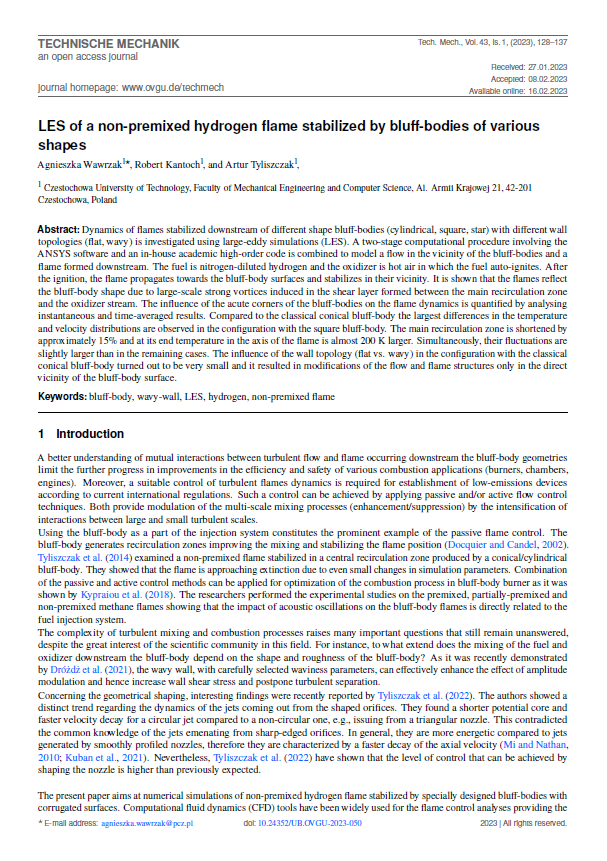LES of a non-premixed hydrogen flame stabilized by bluff-bodies of various shapes
DOI:
https://doi.org/10.24352/UB.OVGU-2023-050Keywords:
bluff-body, wavy-wall, LES, hydrogen, non-premixed flameAbstract
Dynamics of flames stabilized downstream of different shape bluff-bodies (cylindrical, square, star) with different wall topologies (flat, wavy) is investigated using large-eddy simulations (LES). A two-stage computational procedure involving the ANSYS software and an in-house academic high-order code is combined to model a flow in the vicinity of the bluff-bodies and a flame formed downstream. The fuel is nitrogen-diluted hydrogen and the oxidizer is hot air in which the fuel auto-ignites. After the ignition, the flame propagates towards the bluff-body surfaces and stabilizes in their vicinity. It is shown that the flames reflect the bluff-body shape due to large-scale strong vortices induced in the shear layer formed between the main recirculation zone and the oxidizer stream. The influence of the acute corners of the bluff-bodies on the flame dynamics is quantified by analysing instantaneous and time-averaged results. Compared to the classical conical bluff-body the largest differences in the temperature and velocity distributions are observed in the configuration with the square bluff-body. The main recirculation zone is shortened by approximately 15% and at its end temperature in the axis of the flame is almost 200~K larger. Simultaneously, their fluctuations are slightly larger than in the remaining cases. The influence of the wall topology (flat vs. wavy) in the configuration with the classical conical bluff-body turned out to be very small and it resulted in modifications of the flow and flame structures only in the direct vicinity of the bluff-body surface.

Downloads
Published
How to Cite
Issue
Section
License
Copyright (c) 2023 Agnieszka Wawrzak, Robert Kantoch, Artur Tyliszczak

This work is licensed under a Creative Commons Attribution-ShareAlike 4.0 International License.




